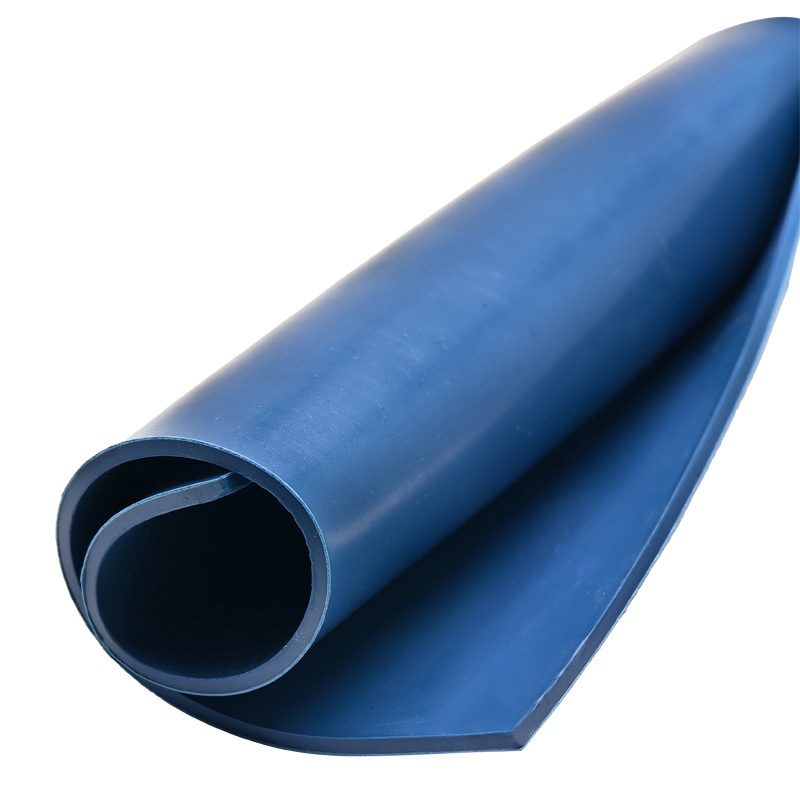What are the potential environmental impacts of using NBR rubber compound for O-ring applications?
2024-10-08

What are the benefits of using NBR Rubber Compound for O-ring applications?
NBR rubber compound for O-ring applications offers several benefits, including excellent resistance to oils and petroleum-based fluids, good resistance to compression set, and excellent abrasion resistance. It is also cost-effective and easy to manufacture, making it a popular choice in various industries.
What are the potential environmental impacts of using NBR rubber compound for O-ring applications?
While NBR rubber compound for O-ring applications offers several benefits, it also has potential environmental impacts. During the manufacturing process, emissions may contribute to air pollution, and disposal of waste may also contribute to environmental pollution. However, several initiatives are being taken to reduce the environmental impact of NBR rubber compound, including the development of sustainable manufacturing processes and recycling initiatives.
How can the environmental impact of using NBR rubber compound for O-ring applications be reduced?
The environmental impact of using NBR rubber compound for O-ring applications can be reduced by adopting sustainable manufacturing processes that reduce emissions and waste. Recycling initiatives can also help reduce environmental pollution by reusing waste material instead of disposing of it. Companies can also invest in research and development to develop more sustainable materials and manufacturing processes.
What are the alternatives to NBR rubber compound for O-ring applications?
There are several alternatives to NBR rubber compound for O-ring applications, including silicone, EPDM, and fluoroelastomers (FKM). Silicone and EPDM offer excellent resistance to heat and weathering, while FKM offers excellent resistance to chemicals and high temperatures. The choice of material depends on the specific application requirements and the environmental impact of each material.
What are the potential health hazards of using NBR rubber compound for O-ring applications?
NBR rubber compound for O-ring applications may contain substances that are potentially harmful to human health, such as nitriles and butadiene. Exposure to these substances may lead to health problems such as irritation of the skin, eyes, and respiratory system, or more serious health problems, such as cancer. It is essential to take necessary precautions, such as wearing protective equipment, and ensuring proper ventilation while handling NBR rubber compound.
In conclusion, NBR rubber compound for O-ring applications offers several benefits, including resistance to oil and petroleum-based fluids, low compression set, and excellent abrasion resistance. However, its potential environmental impacts and potential health hazards should also be considered. Initiatives to reduce the environmental impact of NBR rubber compound, such as sustainable manufacturing processes and recycling initiatives, can help minimize its impact on the environment. Similarly, taking necessary precautions while handling NBR rubber compound can minimize potential health hazards.
Xiamen Sanlongda Rubber Industry Co., Ltd. is a leading manufacturer and supplier of rubber products, including NBR rubber compound for O-ring applications. With over 20 years of experience, we provide high-quality rubber products to customers worldwide. For more information and inquiries, please contact us at dylan@tec-rubber.com.
Reference
1. Smith, J. (2019). Rubber material properties and ozone cracking prevention. Rubber World, 260(1), 19-23.
2. Chen, A., & Han, L. (2020). Synthesis and characterization of acrylonitrile-butadiene rubber (NBR) for oil-resistant gasket applications. Journal of Elastomers and Plastics, 52(9-10), 885-895.
3. Kim, S., & Jeon, B. (2018). Comparative analysis of the activation energy of NBR and HNBR rubber compounds. Polymer Bulletin, 75(8), 3675-3688.
4. Serra, A., & Bhatia, S. (2021). Effects of thermal aging on the mechanical, rheological, and morphological properties of NBR-based compounds. Polymers, 13(2), 250.
5. Chen, X., Li, B., & Zhang, Y. (2020). Development and characterization of NBR/silica nanocomposites with improved mechanical and thermal properties. Journal of Applied Polymer Science, 137(19), 48668.
6. Luo, Y., & Chen, H. (2019). Study on the properties of EPDM/NBR blends at low temperature and oil resistance. Materials Today: Proceedings, 18, 4343-4350.
7. Hao, T., & Wang, D. (2020). Effects of different compatibilizers on the mechanical and thermal properties of FKM/NBR blends. Journal of Applied Polymer Science, 137(11), 48557.
8. Bai, Y., Lv, Y., & Zhang, H. (2019). Mechanical properties and fire performance of epoxy/nitrile butadiene rubber (NBR) modified intumescent flame-retarded coatings. Journal of Coatings Technology and Research, 16(3), 745-753.
9. Abba, M., & Vigier, G. (2021). Dynamic mechanical properties of NBR/SBR blends. Polymer Testing, 93, 106999.
10. Sun, Y., Zhu, Y., & Yang, Y. (2019). Preparation and properties of modified polypropylene/NBR graft copolymer blends. Journal of Materials Research and Technology, 8(4), 4321-4333.





